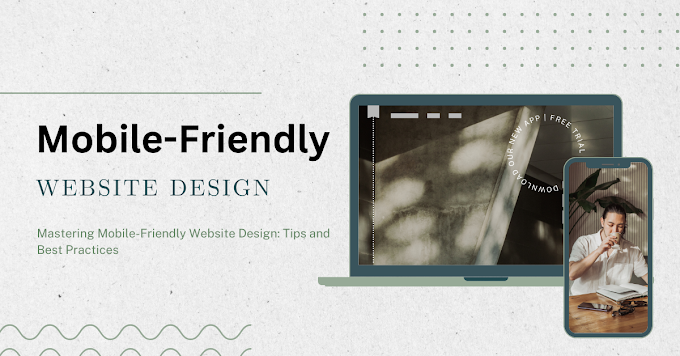Mastering CSS3 Responsive Design: A Comprehensive Guide
In the dynamic panorama of internet improvement, growing websites that seamlessly adapt to numerous gadgets and screen sizes is paramount. CSS3, the latest iteration of Cascading Style Sheets, introduces powerful capabilities that make responsive layout greater viable than ever before. In this complete manual, we will discover the principles and strategies of CSS3 responsive layout, empowering you to craft web sites that supply an top-rated user enjoy across a spectrum of gadgets.
Understanding Responsive Design
Responsive layout is an internet improvement method that ensures a internet site's format and content material adapt to one-of-a-kind screen sizes and resolutions. CSS3 performs a pivotal role in reaching responsiveness, supplying features that allow developers to create bendy and fluid layouts.
**1. Media Queries: The Foundation of Responsiveness
Media queries are CSS rules that apply styles based at the traits of the device or viewport. By the usage of media queries, you may tailor the presentation of your website to specific gadgets, such as smartphones, pills, laptops, and desktops.
/* Example of a media query */
@media display screen and (max-width: 768px)
/* Styles for screens as much as 768 pixels extensive */
.Responsive-container
width: 100%;
2. Fluid Grids: Creating Flexible Layouts
A essential concept in responsive design is the usage of fluid grids. Instead of constant-width layouts, a fluid grid permits factors to proportionally alter based totally on the screen length. This prevents content from performing cramped or stretched on numerous gadgets.
/* Example of a fluid grid */
.Box
width: a hundred%;
max-width: 1200px;
margin: 0 car;
padding: 0 20px;
3. Flexible Images: Adapting to Different Screens
Images are a critical component of net design, and ensuring they scale accurately is vital for responsiveness. The max-width: one hundred% belongings ensures that photos resize proportionally within their figure field.
/* Example of bendy pics */
img
max-width: 100%;
peak: auto;
4. CSS Flexbox and Grid: Streamlining Layouts
CSS Flexbox and Grid layouts provide powerful equipment for building complicated and responsive designs simply. These layout fashions permit for more green distribution of space and alignment of factors, facilitating responsive designs that had been once hard to obtain.
/* Example of using Flexbox for format */
.Box
display: flex;
justify-content material: area-between;
/* Example of the use of Grid for layout */
.Field
display: grid;
grid-template-columns: repeat(auto-fill, minmax(250px, 1fr));
grid-hole: 20px;
5. CSS3 Media Queries: Tailoring Styles for Specific Devices
CSS3 media queries extend the abilities of traditional media queries by means of permitting you to use styles based totally on device functions which include display screen resolution, factor ratio, and tool orientation.
/* Example of CSS3 media question for excessive-decision screens */
@media display screen and (min-decision: 192dpi)
/* Styles for high-decision displays */
body
font-size: 18px;
6. Mobile-First Design: Prioritizing Small Screens
Adopting a mobile-first design technique entails developing patterns for cell devices first and then gradually enhancing them for larger screens. This approach guarantees a stable foundation for smaller screens and a greater streamlined person revel in.
/* Example of cell-first layout */
frame
font-size: 16px;
@media display screen and (min-width: 768px)
/* Styles for displays 768 pixels and wider */
body
font-length: 18px;
7. Testing and Debugging Responsiveness
Testing is a essential step in making sure that your responsive layout works across numerous gadgets. Browser developer gear, on line trying out platforms, and bodily device trying out are essential components of a radical testing method.
Conclusion: Crafting Seamless Experiences Across Devices
CSS3 responsive layout isn't always only a trend; it's a need in present day multi-tool panorama. By learning the ideas and strategies mentioned in this manual, you could create websites that adapt gracefully to the diverse array of gadgets your audience uses. Whether you are a seasoned developer or just starting, embracing CSS3 responsive design will decorate your capacity to supply compelling and available internet reviews.
FAQ
1. What is CSS3 Responsive Design, and why is it vital?
CSS3 Responsive Design is an method to web design that makes use of Cascading Style Sheets (CSS3) to make websites adapt and respond to diverse screen sizes and gadgets. It's critical for providing a seamless consumer enjoy throughout different devices, including computers, capsules, and smartphones.
2. How does media queries make a contribution to CSS3 Responsive Design?
Media queries are a key feature of CSS3 Responsive Design. They permit developers to use special styles primarily based on characteristics like screen width, peak, or device orientation. Media queries permit the creation of flexible layouts and the adjustment of styling elements to healthy the consumer's tool.
3. What role do flexbox and grid play in responsive web layout the use of CSS3?
Flexbox and grid are layout modules in CSS3 that enhance responsive internet layout. Flexbox is good for one-dimensional layouts, such as navigation bars, whilst grid is suitable for extra complex, -dimensional layouts. Both offer efficient approaches to shape and align elements on a website for unique display sizes.
4. How can CSS3 Responsive Design enhance internet site overall performance?
CSS3 Responsive Design can improve internet site overall performance by means of decreasing the need for separate mobile and computer variations. It enables the creation of a single, adaptable layout that optimizes content material delivery for numerous devices, ensuing in quicker load times and a more efficient consumer experience.
5. What are a few quality practices for implementing CSS3 Responsive Design?
Best practices for CSS3 Responsive Design consist of the use of relative gadgets like probabilities and ems for sizing, optimizing snap shots for distinct resolutions, checking out designs across various gadgets and browsers, and prioritizing content material to ensure the maximum vital information is displayed prominently on smaller screens. Regular trying out and iteration are vital to refine and decorate the responsiveness of a internet site.

.png)






